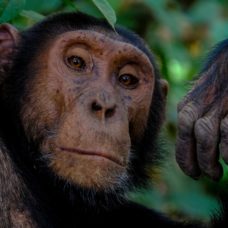Scientists recently unearthed several new archeological findings that expand our knowledge of early human development.
As a scientific discipline, archeology reconstructs the history of humanity according to fossilized evidence. This field attempts to define our species’ past by following its evolution from the earliest discoverable evidence to the present day.
For researchers across several archeological sub-fields, archaeological excavation is only the beginning of a long period of investigation.
After excavating artifacts, fossils, and other material from ancient cultures, next comes the process of archiving, analysis, and interpretation.
Through the discovery, classification, and the preservation of this valuable heritage, we acquire growing knowledge about early human development that could be still relevant.
The more archeologists that dig, the more discoveries they stumble on. As we mentioned early this year, homo sapien evidence was found, in 2017, to be 115,000 years old than previously thought.
Today, we bring you some more recent archeological finds that expand our understanding of early human development.
Read More: Where did it all Begin? The Theory of the Beginning of Life
Early Human Development: Homo Sapiens Made and Traded Innovative Tools
We don’t exactly know at which stage of our evolution early humans started showing signs of innovation and putting tools to practical use.
An international research team led by anthropologists of the Smithsonian Institute says that early humans in eastern Africa produced sophisticated tools and also traded with other distant populations much earlier than previously thought.
This new evidence pushes back these activities to 320,000 years ago, tens of thousands of years earlier than past evidence shows.
It pushes back our timeline of early human development and fundamentally changes the idea of the Early Stone Age.
This brings to mind more recent stories of catastrophe’s like the destruction of the Library of Alexandira. If a working steam engine truly existed in the library but the knowledge was lost, how many times has human technological development ebbed and flowed?
According to scientists, these early human behaviors evolved when the environment was going through a phase of extreme variability.
Rick Potts, director of the Smithsonian’s Human Origins Program said:
“This change to a very sophisticated set of behaviors that involved greater mental abilities and more complex social lives may have been the leading edge that distinguished our lineage from other early humans.”
Read More: Why Life Needs a Challenge to Adapt
Sequencing the DNA of 15,000-Year-old Homo Sapiens
Last year, archeologists in Morocco found fossil remains of old Homo Sapiens that pushed back the age of modern humans as a species by 115,000 years.
Now, another research team succeeded in the sequencing of the oldest DNA of homo sapiens.
The DNA comes from nine individuals discovered in a burial site in Morroco, dating back to 15,000 years ago, or the Late Stone Age.
Researchers found that these individuals had a genetic heritage that was two-thirds similar to populations from Near Eastern, one-third to sub-Saharan Africans, and mainly of West African populations.
These findings suggest that North African populations and those of the Near East region were “genetically open” to each others’ influence quite early on in our human development.
“Clearly, human populations were interacting much more with groups from other, more distant areas than was previously assumed,” said Johannes Krause, co-senior author of the study. “This illustrates the ability of ancient genetics to add to our understanding of human history.”
Archaic Interbreeding of Homo Sapiens
It’s known that modern humans, or Homo Sapiens, coexisted and cross-bred with Neanderthals, a human species that went extinct 40,000 years ago.
New findings suggest that the genetic history of modern humans may have been influenced by species other than Neanderthals. The evidence seems to suggest that there was a propensity for diverse breeding in early human development.
Homo Sapiens also interbred with another extinct species of archaic humans known as the Denisovans, twice during their coexistence.
Researchers at the University of Washington compared the genome of two groups of modern humans with that of Denisovans and discovered two distinct episodes of Denisovan’s genetic mix. Early human development, like current human development, seems to be a story of diversity.
“What was known already was that Oceanian individuals, notably Papuan individuals, have significant amounts of Denisovan ancestry,” said lead researcher Sharon Browning. “The genomes of modern Papuan individuals contain approximately 5% Denisovan ancestry.”
The Cro-Magnon Man’s Face Reconstructed
In 1868, the fossil remains of Cro-Magnon 1, a middle-aged male Homo sapien, were discovered by chance in a Les Eyzies, France rock shelter named Cro-Magnon. The remains were happened upon during the construction of a railway line.
Now, after about 28,000 years after his death, the Cro-Magnon man’s face comes to life.
To mark the 150th anniversary of this discovery, a researc1h a team from the University of Versailles-Saint-Quentin reconstructed the face of the Cro-Magnon 1.
A diagnosis of the Cro-Magnon man’s skull revealed signs of neurofibromatosis, a genetic disease. The micro MT scan showed “a limited resorption of the external cortical bone, of granular aspect, without peripheral sclerosis in the internal table, which excludes a malignant transformation.” This was brought about by several benign tumors on his face, including a large one on his forehead.
These tumors left indelible lesions on the facial bones.
The result was a realistic facial reconstruction of the Cro-Magnon man, taking into account the aesthetic effect of the cancerous tumors. Apparently, cancer was already a big part of early human development.



















Comments (0)
Most Recent